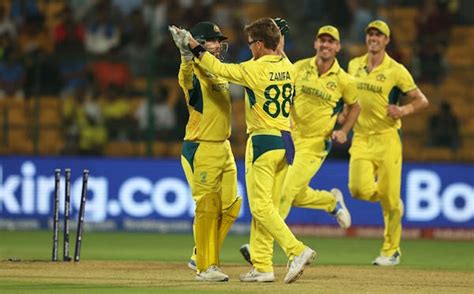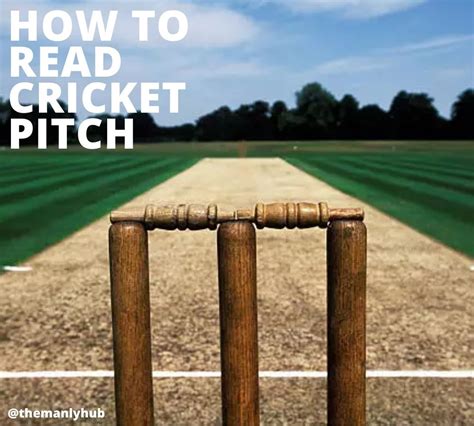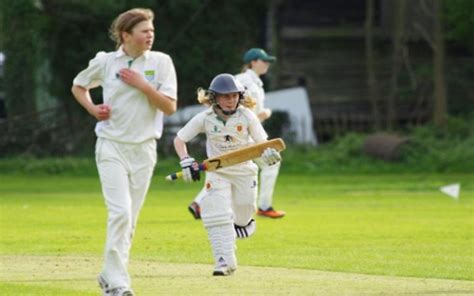Explore the Duckworth-Lewis Method in cricket—its basics, calculations, effectiveness, and challenges. Learn how it impacts match outcomes and more.In the world of cricket, weather conditions can dramatically affect match outcomes, leading to disruptions that require a fair method for recalibrating scores. Enter the Duckworth-Lewis Method (DLM)—a statistical approach designed to ensure fairness when rain plays spoilsport. This article delves into the intricacies of the Duckworth-Lewis Method, breaking down its fundamental principles and showcasing its impact on match results. We will explore the intricate calculation process that underpins this method, analyze its effectiveness in real-world scenarios, and discuss the challenges it faces alongside potential improvements. By the end, you’ll have a comprehensive understanding of how this innovative formula continues to shape the game of cricket, ensuring that every match can conclude fairly, regardless of the weather.
Understanding The Basics Of The Duckworth-Lewis Method
The Duckworth-Lewis Method is a mathematical formula used in cricket to calculate the target score for the team batting second in interrupted matches. This method becomes essential when a match is affected by weather conditions or other unforeseen circumstances, resulting in reduced overs. Understanding the fundamentals of this methodology is vital for players, fans, and analysts alike.
Developed by statisticians Frank Duckworth and Tony Lewis, the method aims to ensure that the match outcomes are fair and equitable, given the circumstances. At its core, the method takes into account not just the number of overs left, but also the number of wickets remaining to create a balanced playing field for both teams.
The Duckworth-Lewis Calculation relies on the concept of resources—where resources are defined as the combination of overs and wickets. As a match progresses, each team’s potential scoring ability changes based on these resources:
| Match Context | Resources Available |
|---|---|
| Full innings (50 overs) | 100% Resources |
| Reduced to 40 overs | Approximately 80% Resources |
| After 10 overs | Various % depending on wickets lost |
The resultant score is designed to give the chasing team a target that is proportionate to the resources they have left compared to what the team batting first had initially. By explaining the method’s resources-based approach, it provides a more nuanced understanding of how cricket outcomes can be determined under varied match situations.
The Duckworth-Lewis Method simplifies the complexities of interrupted games, ensuring that teams compete on an even footing, regardless of circumstances beyond their control. Understanding these basics sets the foundation for exploring deeper aspects of the method and its implications in cricket.
How The Duckworth-Lewis Method Impacts Match Outcomes
The Duckworth-Lewis Method plays a critical role in determining the outcomes of cricket matches, especially in limited overs formats where weather can significantly affect the game. This method provides a systematic approach to recalibrating target scores when interruptions occur, thus ensuring that teams have a fair chance of competing under varying circumstances.
By accurately adjusting the target based on the number of overs left and wickets remaining, the Duckworth-Lewis Method diminishes the likelihood of unfair advantages. For instance, a team batting first may find themselves at a disadvantage if rain reduces the number of overs for the chasing team. However, with the Duckworth-Lewis Method, the adjusted target helps to level the playing field.
Furthermore, the potential psychological impact on players cannot be overlooked. When teams are aware that the Duckworth-Lewis Method will be used in the event of rain delays, it influences their strategies and mindset. Batting teams may take more aggressive approaches, knowing they can still reach a revised target, while bowling teams may strategize differently to reduce the scoring rate early on.
Overall, understanding how the Duckworth-Lewis Method impacts match outcomes provides players, coaches, and fans with a deeper comprehension of its significance in the sport. As we continue to improve and refine this method, its influence is likely to evolve, ultimately shaping the future of cricket in unpredictable conditions.
Explaining The Calculation Process Of The Duckworth-Lewis Method
The Duckworth-Lewis method is a complex statistical formula used in cricket to adjust the target score in limited-overs matches, primarily when interruptions occur due to weather conditions. This process ensures that both teams have a fair chance of victory despite disruptions.
At the core of the calculations lies the use of two key elements: the number of wickets remaining and the total number of overs left to play. The method operates on the premise that each team has a set ‘resource’ which they can utilize throughout the match. When a game is interrupted, the resources remaining for the affected team are recalibrated to establish a revised target.
The steps involved in the calculation process are as follows:
- Determine Resources: Each team starts with a set number of overs and wickets. The Duckworth-Lewis method uses historical data to estimate how many runs a team can expect to score based on the number of overs and wickets left.
- Calculate Proportion of Resources: When an interruption occurs, the resources available to the batting side are recalculated, which identifies the percentage of resources used before the interruption as well as those remaining.
- Adjust Target Score: Using the resources calculation, the method then translates the batting side’s resources left into a new target score, ensuring fairness based on the game’s state prior to the interruption.
This systematic approach to explaining the calculation process provides a clear methodology for adjusting scores and targets in real time, helping match officials and players maintain the integrity of the game in the face of unforeseen interruptions.
Analyzing The Effectiveness Of The Duckworth-Lewis Method In Cricket
The Duckworth-Lewis Method (DLM) has been a crucial tool in the world of cricket, particularly in limited-overs formats, where rain interruptions can drastically affect match outcomes. Analyzing the effectiveness of this method involves examining various aspects such as accuracy, fairness, and acceptance among players and analysts.
One of the primary strengths of the DLM is its statistical foundation. The method is built upon the resources available to both teams, namely wickets in hand and overs remaining. This enables a more precise adjustment of targets based on the game’s progression at the time of the interruption. Consequently, it aims to ensure that the chasing team has a fair chance of winning, reflecting the run-scoring conditions prior to the rain delay.
In practice, the effectiveness of the DLM can often be influenced by the context of a match. For instance, if a team has a significant lead when rain interrupts, the adjusted target may still favor the team that was ahead, thereby maintaining competitive balance. However, critics argue that the method can sometimes lead to skewed outcomes, especially in matches with unpredictable weather conditions or when teams operate at different scoring rates. This variability can lead to situations where the adjustments feel arbitrary, particularly to fans and players alike.
The acceptance of the DLM among players and analysts has generally improved over time. While early criticisms highlighted its complexity and obscurity, many now recognize it as a more sophisticated approach compared to previous methods like averages. Nonetheless, there remains a segment of the cricket community that calls for more straightforward alternatives, especially in the face of rapid technological advancements in data analysis.
explaining the effectiveness of the Duckworth-Lewis Method requires a nuanced understanding of its mechanics and impact. While it has its strengths in delivering a balanced outcome in rain-affected matches, the conversation continues about its adaptability and relevance in cricket as the sport evolves.
Challenges And Improvements In The Duckworth-Lewis Method
The Duckworth-Lewis method has faced various challenges since its inception, particularly in how it adapts to different match scenarios and the evolving dynamics of limited-overs cricket. One major criticism is the complexity of the calculations involved. Many fans find it difficult to understand, leading to confusion during crucial match moments when the DLS is applied.
Furthermore, the effectiveness of the method can sometimes be compromised based on the weather conditions and the timing of interruptions. For instance, if rain falls during a particularly one-sided match, the recalibrated targets may not accurately reflect the true competition level between the teams. Additionally, the method relies on historical data, which may not always represent the current match conditions due to variations in pitch, player form, and team strategies.
To address these challenges, ongoing improvements and updates to the method are essential. Recent enhancements have included the introduction of the Duckworth-Lewis-Stern (DLS) method, which refines the calculations based on feedback and modern playing conditions. The DLS method aims to provide a more comprehensive and transparent formula for recalculating targets, including refinements that take into account team strengths and match context more effectively.
Table: Key Challenges and Proposed Improvements in the Duckworth-Lewis Method
| Challenge | Proposed Improvement |
|---|---|
| Complexity of calculations | Simplification of the calculation process for better understanding |
| Dependence on historical data | Incorporating real-time data and analytics |
| Inability to accommodate all match conditions | More dynamic adjustments based on current match context |
| Perception issues among fans | Enhancing communication and education about the method |
While challenges exist in the current framework, there is significant potential for the explaining the Duckworth-Lewis method to integrate these improvements. With continued evolution, this method can remain a vital part of cricket, ensuring that matches are fair and engaging, even under unpredictable conditions.
Frequently Asked Questions
What is the Duckworth-Lewis method?
The Duckworth-Lewis method is a mathematical formula used in limited overs cricket to calculate the target score for the team batting second in matches interrupted by weather or other factors.
Why was the Duckworth-Lewis method introduced?
It was introduced to provide a fair and consistent way of determining a revised target score when a match is affected by interruptions, ensuring that both teams have an equitable chance of winning.
How does the Duckworth-Lewis method work?
The method works by considering the number of overs remaining, the number of wickets lost, and the resources available to both teams at the point of interruption to calculate an adjusted target.
Who developed the Duckworth-Lewis method?
The method was developed by Professor Frank Duckworth and Statistician Tony Lewis, which is why it is commonly referred to as the Duckworth-Lewis method.
Is the Duckworth-Lewis method still in use?
Yes, although it has been updated and is now incorporated into the Duckworth-Lewis-Stern (DLS) method, which adds more accuracy and elements to the calculations.
What are some criticisms of the Duckworth-Lewis method?
Critics often argue that the method can produce results that seem unfair or that the calculations can be complex for spectators to understand, leading to confusion during matches.
How do players and teams prepare for the Duckworth-Lewis scenarios?
Teams often analyze historical data and familiarize themselves with the DLS calculations in order to devise strategies anticipating potential interruptions during a match.









